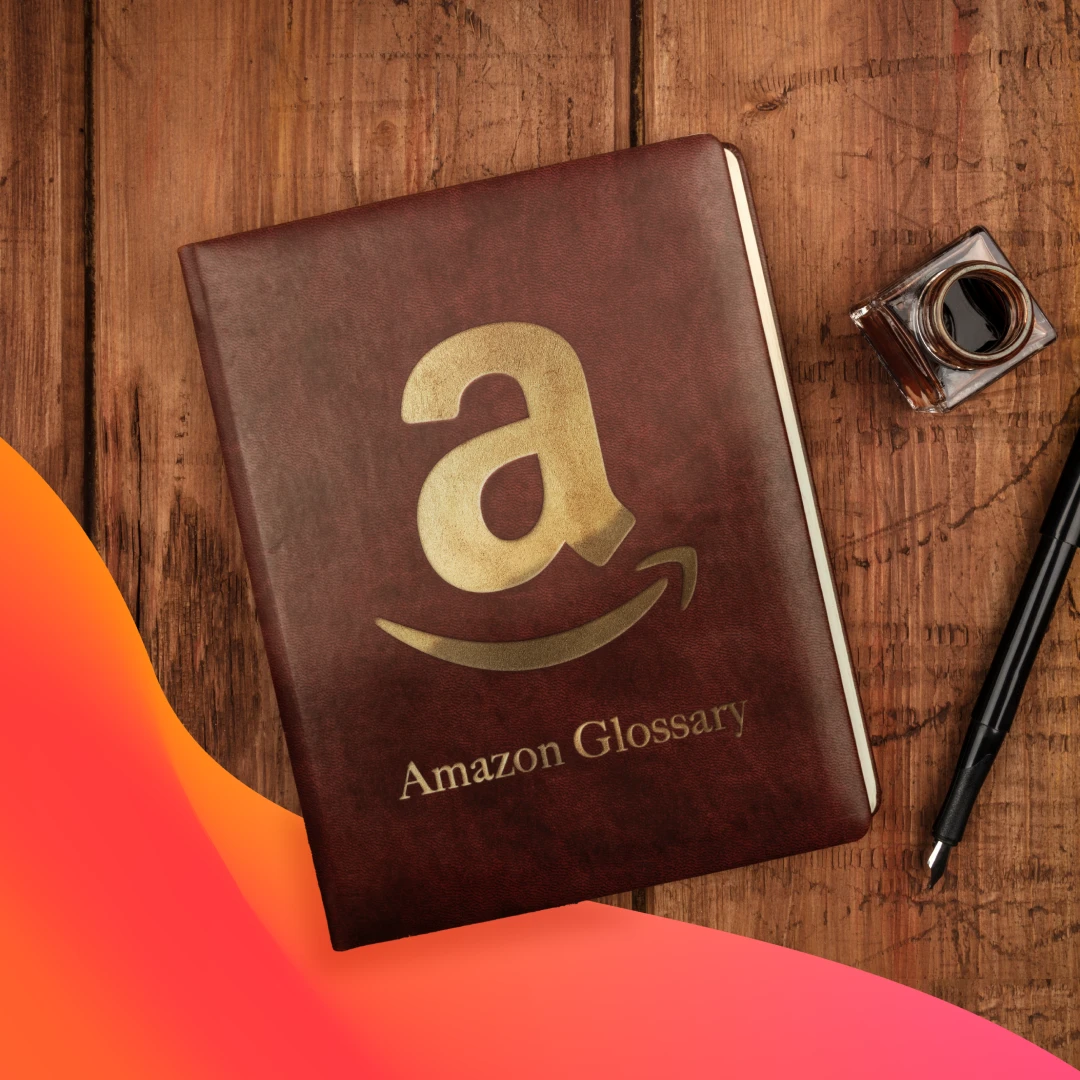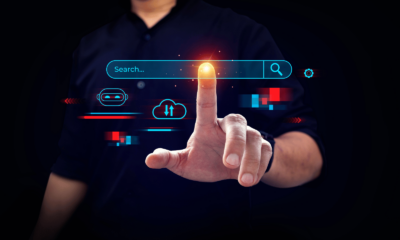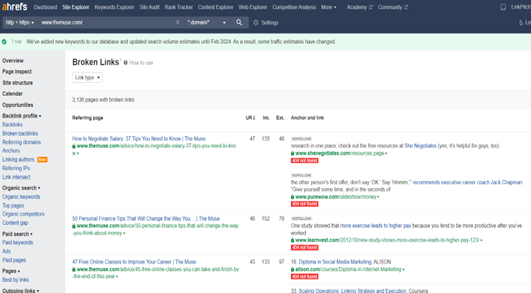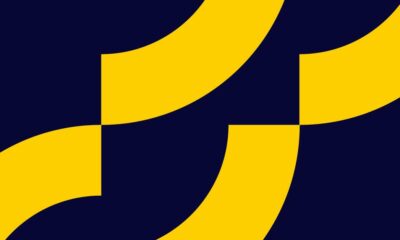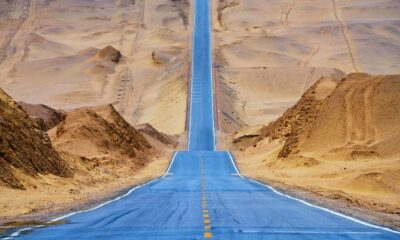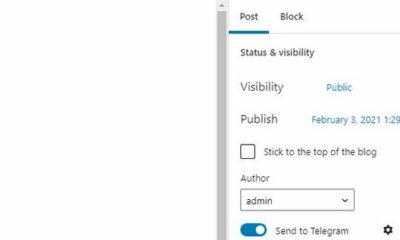Don’t know your Buy Box from your Brand Registry, or your DSP from your AMC? Tinuiti is here to help! We’ve put together a veritable encyclopedia of Amazon, outlining definitions for some of the most common terms and acronyms associated with selling and advertising on the platform.
While a truly exhaustive list of Amazon terms might never be complete, we aimed to hit on those most important to sellers, vendors, brands, and advertisers. We’ll be updating our Amazon Glossary over time to maintain accuracy and expand on its comprehensiveness. If there’s anything you’d like to see added, let us know on LinkedIn!
A
- ASIN – Amazon Standard Identification Number
- An ASIN, or Amazon Standard Identification Number, is a unique 10-character alphanumeric identifier that Amazon assigns to your product once you’ve created a new product listing. This number does not replace a UPC, and is only used for and within Amazon to identify products. If the same exact product is being sold by two or more different sellers, all will have the same ASIN as this is associated with the item, not a particular seller.
If an item you offer is available in a variety of different colors, sizes, pack sizes, or other choice options, Amazon can assign a ‘parent’ ASIN to the product listing, with each variation being assigned its own ‘child’ ASIN. Parent ASINs and child ASINs are also commonly known as parent listings and child listings.
- A+ Content – A Plus Content
- A+ content is a free-to-use tool that offers brands a unique opportunity to elevate their product listings and captivate shoppers in visually engaging and informative ways, integrating detailed product descriptions, rich images, product comparison charts, and more to help customers make informed buying decisions.
A+ content can include custom paragraph headers and images, and unique image and text layouts, including bulleted features lists. Available exclusively to registered brand owners, A+ Content helps in enhancing brand visibility and product education, crafting a compelling narrative, showcasing your brand story, fostering customer loyalty and trust, and potentially boosting sales.
Amazon formerly offered an Enhanced Brand Content (EBC) feature, which has been deprecated and is now part of A+ Content.
Learn more about A+ Content:
Medical Guardian Amazon Creative Refresh
Tinuiti’s Amazon Creative Services
- Advertising Cost of Sales (ACoS)
- Amazon ACoS is an advertising metric that illustrates how much money was spent on advertising in relation to sales.
ACoS is determined using the following formula: 100 ( [total ad spend] ÷ [total ad sales] )
- Amazon Ad Server (AAS)
- Amazon Ad Server—formerly known as Sizmek Ad Suite—is a global multichannel ad server that enhances advertiser control and holistic measurement capabilities. Amazon Ad Server’s features and functionalities include intuitive campaign management and data visualization tools, advanced DCO capabilities, Amazon Attribution integration, and multichannel ad serving and tag management. Amazon Ad Server is available to advertisers in more than 20 countries, including the US, Canada, Mexico, UK, and India, including both vendors and sellers.
Learn more about Amazon Ad Server:
Amazon’s AAS adtech solutions page
Amazon Ad Server launch announcement
- Amazon Ads Advanced Partners
- Amazon Ads Advanced Partner status is a global recognition program that recognizes Amazon Ads partners for the growth they deliver for their clients advertising on Amazon, and their level of engagement and expertise working with Amazon Ads products like Amazon DSP and sponsored ads.
Tinuiti earned Amazon Ads Advanced Partner status by demonstrating expertise in brand building and customer engagement on Amazon.
What Tinuiti’s Amazon Ads Advanced Partner status means for our clients
- Amazon Attribution
- Amazon Attribution is a free analytics measurement solution that provides Brand Registry enrolled advertisers with insights into how their off-Amazon marketing campaigns are impacting their Amazon sales. Brands can measure the impact of their display, search, social, video, and email campaigns on consumers discovering, researching, and buying their products on Amazon.
Amazon Attribution is available to vendors, KDP authors, and professional sellers enrolled in Amazon Brand Registry who are advertising on channels outside of Amazon, as well as agencies like Tinuiti who have clients who sell products on Amazon.
“Amazon Attribution gives brands that sell on Amazon the data needed to invest more heavily in advertising off of Amazon to drive sales. It opens up the opportunity to create full funnel, multi-channel marketing campaigns to support sales goals for our clients across the board.”
— Nii Ahene, Chief Strategy Officer, Tinuiti
- Amazon Basics
- Amazon Basics is Amazon’s private label brand of everyday essentials, home goods, clothing, and more. The Amazon Basics product line launched in 2009 and has grown over the years to include popular, well-reviewed items across many categories. Like most ‘store brand’ lines—such as Target’s up & up and Whole Foods’ 365 Everyday Value® products—Amazon Basics brand items are typically offered at a lower price than their name-brand counterparts in the respective category.
- Amazon DSP – Amazon Demand-Side Platform
- Amazon DSP enables advertisers to use available data to programmatically purchase video, audio, and display ad placements to target shoppers on and off of Amazon. Amazon DSP allows brands to use Amazon’s incredible targeting capabilities to show ads on both Amazon owned-and-operated web properties, as well as those Amazon does not control.
Using Amazon DSP you can reach audiences on Amazon.com, Fire TV, IMDb, Kindle, Twitch, Apps, Publisher Partners, Third Party Exchanges, Digital Signage Ads and more. Amazon DSP can be used by brands selling on Amazon, as well as brands who aren’t selling on Amazon who want to leverage Amazon insights in their targeting. DSP ads can lead prospective customers to pages on Amazon.com or a brand’s own website, with ad costs based on a CPM model.
Note: Unlike self-manageable Sponsored Products, Sponsored Brands, or Sponsored Display ads, leveraging DSP requires that you work with an Amazon Ads Agency Partner like Tinuiti.
Learn more about Amazon DSP:
Amazon DSP Campaign Examples
How R+Co Uses Amazon DSP To Thrive On The Marketplace
Full Funnel Advanced Amazon DSP Strategy Webinar
A Performance-Based Approach to Amazon DSP Webinar
Amazon’s DSP product page
Amazon Demand Side Platform Guide For Advertisers
- Amazon Live
- Amazon Live is a live streaming feature on Amazon.com that provides brands and influencers with a platform to share products in real time. Similar to home shopping channels like QVC and HSN, Amazon Live offers an opportunity to discuss all aspects of your products and brand, connecting with potential customers in a more engaging, personal and interactive way. Links to the products being featured in the livestream are easily clickable for viewers who want to learn more, or make a purchase. Viewers can also ask the host questions using Amazon Live’s chat feature.
Amazon Live is free to use, and is available to: Brand owners using Seller Central; Amazon Vendors with an approved Amazon Store in Advertising Console; Amazon Influencers with an active influencer storefront. Livestreams are accessible on desktop at Amazon.com/Live, and under ‘Amazon Live’ in the Amazon mobile app. They can also be organically discovered across Amazon.com, including on PDPs for products being featured in a livestream. All interested users must download the Amazon Live Creator app, which is currently only available and optimized for iPhones.
Learn more about Amazon Live:
Amazon’s Live product page
Amazon Live Creator: Do’s and Don’ts
- Amazon OTT Ads
- OTT includes video content that is delivered to viewers via the internet through a streaming video service provider—going ‘over the top’ of a traditional cable box. Amazon OTT ads are streaming ads served to viewers watching over-the-top (OTT) video content on connected TVs, laptops, tablets, and other internet-connected devices.
Also commonly referred to as Streaming TV ads, these targeted, non-skippable placements give advertisers an opportunity to reach new and existing audiences at scale while they’re enjoying their favorite ad-supported streaming content. Amazon OTT ads are available to advertisers using Amazon DSP, including those who sell and don’t sell on Amazon.
“If you’ve ever binged a show on Freevee, streamed a live event on Twitch, or watched your favorite network broadcast app on Fire TV, you’ve experienced over-the-top (OTT) video content.”
— Amazon
Learn more about Amazon OTT ads:
Scale your reach with Streaming TV and online video ads
Amazon guide to video marketing
Amazon’s guide to OTT
- Amazon Posts
- Amazon Posts are designed to increase product discoverability and boost brand awareness. Similar to social media updates in purpose and design, Posts can be managed directly in the Amazon Ads console as of June 2023.
Brand-registered sellers can share brand and product-related content in a “feed” that resembles other social media platforms. Posts appear on your brand’s feed and are highly visible to your current Amazon followers. Amazon’s algorithm also serves posts to potential customers on product detail pages, category-based feeds, and “related product” feeds, enabling new audiences to discover your products. Amazon Posts are instantly shoppable, allowing users to go straight to the item’s detail page to learn more and add it to their online shopping cart.
Posts can appear in the category feed, related Post feed, related brand details page, and/or brand-owned details page. Advertisers cannot choose where Posts appear; this will be determined by Amazon.
Amazon Posts offer built-in analytics, with KPIs including clicks, views, and shares. Fulfilling the requirements for Amazon Posts participation involves being enrolled in Amazon’s Brand Registry and having an active Brand profile; it is no longer required for advertisers to have a Store to create a Post profile.
Learn more about Amazon Posts:
Amazon’s Posts product page
Amazon’s Guide on increasing Posts reach and engagement
- Amazon SEO
- Amazon SEO—or search engine optimization—is the process of optimizing your product listings on Amazon to improve their chances of ranking organically in Amazon searches for the most important and relevant keyword searches. Optimizing your listings makes it easier for Amazon to understand the searches for which your product is relevant, benefitting the customer not only through product discovery, but also with the clear, comprehensive product details that are a natural byproduct of a well-optimized listing.
- Amazon Stores
- Amazon Stores are a free, self-managed product that allows brands to create a customized shopping experience within Amazon.com. Brands can design modern, easily navigable multi-page stores that guide shoppers through every stage of the consumer journey.
Through the use of customizable colors and an array of image, video, and text modules, brands can leverage Amazon’s intuitive, user-friendly templates and features to bring an accurate reflection of their overall brand experience to the Amazon platform.
Learn more about Amazon Stores:
Amazon Storefront Examples
Why You Should Open an Amazon Store
Tinuiti’s Amazon Creative Services
Amazon’s Stores product page
- AMC – Amazon Marketing Cloud
- Amazon Marketing Cloud (AMC) is a secure, privacy-friendly, dedicated cloud-based data clean room that was beta released by Amazon Advertising in 2021. AMC is a measurement and analytics solution designed to help marketers measure performance across different media channels.
“AMC is a clean room solution that advertisers can access, and essentially structure custom queries to explore specific questions that help address top business priorities and measurement challenges, allowing brands to access incredibly detailed data that is specific to their audiences’ journey. AMC gives us the ability to understand what is working and what is the connectedness between “events” – going beyond what traditional reports provide.”
— Nancy McLaughlin, Senior Director, Marketplaces at TinuitiLearn more about Amazon Marketing Cloud:
Tinuiti helped grow Poppi’s new-to-brand orders by 16x using Amazon Marketing Cloud
Demystifying Amazon Marketing Cloud’s Attribution Model Webinar
Amazon’s AMC product page
How Tinuiti uses AMC on the Amazon Ads blog
- A-to-Z Guarantee / A-to-Z Claims
- Amazon’s A-to-Z Guarantee is a buyer protection promise from Amazon when buying items from third-party sellers on Amazon.com. If a buyer has an issue with the timely delivery or condition of their items upon receipt, they are to first contact the seller directly. If the seller does not provide them with an acceptable resolution within 48 hours of the customer’s first message, the customer may be eligible to file an A-to-Z claim if certain conditions are met.
Learn more about Amazon’s A-to-Z Guarantee.
- Audio Ads
- Amazon audio ads are played across premium audio content on first-party and third-party streaming audio services. These non-skippable ads range in length from 10 to 30 seconds, and are available for advertisers who sell on Amazon, as well as those who don’t. Sold on a CPM basis, audio ads can be heard by listeners on Twitch, Alexa News, Amazon Music ad-supported tier, and via third-party Amazon Publisher Direct outlets. Interactive audio ads are also available for Alexa-enabled devices in the US.
Learn more about Amazon audio ads:
Amazon Audio Ads specs
Audio’s impact on emotions: New study on the science of brand building with sound
2 tactics used more often in top-performing Amazon audio campaigns
B
- Born to Run Program
- Amazon’s Born to Run Program is an invite-only program that helps vendors in successfully launching a new product on Amazon without risking going out-of-stock, or otherwise maintaining elevated stock on an existing item through additional purchase order(s) from Amazon.
Because 1P vendors have less control over inventory levels than 3P sellers, Born to Run gives them an opportunity to give Amazon a ‘heads-up’ that they expect to sell through a certain quantity on a specific ASIN within a 10-week period. This ASIN is often a new product that the vendor is expecting will be a fast seller, but it can also be an existing product/ASIN that the vendor expects higher-than-usual demand for. This can be for any number of reasons, including planned marketing initiatives.
If a vendor’s Born to Run submission is approved and they do not sell through the additional inventory they expected to in the outlined 10-week period on Amazon, they may be subject to taking the inventory back or paying an inventory retention fee, depending on the terms of their agreement with Amazon.
Learn more in the Born to Run Policy & FAQs.
- Brand Follow – Amazon Followers
- Amazon Followers are shoppers who have opted-in to receive updates and notifications from your brand by clicking your Follow button. Brand Follow buttons have been integrated into the Amazon shopping experience, appearing within Amazon Stores, Posts, and Amazon Live. Followers are more likely to see deals posted by brands, influencers, and authors that they follow. Brands can manage follower notifications through Amazon Posts and the Manage Your Customer Engagement Tool.
Learn more in Amazon’s Brand Follow announcement.
- Brand Registry
- Amazon’s Brand Registry is a brand protection program that aims to protect a brand’s intellectual property, preventing third-party sellers from selling counterfeit versions of a brand’s product—or changing their product content—on the Amazon Marketplace. Brand Registry helps brand owners protect their registered trademarks and ensure customers have an accurate brand experience. With access to predictive automations, reporting tools, and proprietary text and image search, Amazon Brand Registry is a valuable, free offering available for brands that have at least one registered trademark.
Tinuiti’s 2023 Amazon Guide
- Buy Box (BB)
- Amazon’s Buy Box is a coveted section on the right side of an Amazon product detail page where customers can click to add a product to their cart (Add to Cart), or make an instant purchase (Buy Now). Both of these buttons result in customers making a purchase from the Buy Box winner. The majority of Amazon customers shop using the Buy Box, with many not even knowing that for some listings, there are multiple sellers they can choose to shop from.
Image Source: https://tinuiti.com/blog/amazon/sell-on-amazon/Amazon determines the Buy Box winner based on a number of factors, including price, stock, fulfillment and seller rating. Because the factors that determine Buy Box eligibility are always in flux, the winner of the Buy Box rotations may change over time.
Only Professional Seller accounts are eligible for Amazon Buy Box rotations. Longstanding sellers have an improved chance of winning Buy Box rotations because they have exhibited a proven track record of successful sales that rate highly with customers and intuit that your business will continue operating at high performance levels going forward.
Note: Sponsored Products are only available for products that own the Buy Box. If one of the products you’re running ads for loses the Buy Box, your Sponsored Products ads will automatically stop running. If you have Sponsored Brands Ads (SBAs) running and you lose the Buy Box, you should pause the ads yourself. Otherwise, you risk paying for traffic to a page where another seller is more likely to get the sale because SBAs aren’t Buy Box-dependent.
- Buy with Prime
- Amazon Buy with Prime is designed to extend the simplified checkout experience and shipping benefits Prime members enjoy when shopping on Amazon to a brand’s own ecommerce website. Participating merchants can implement the Buy with Prime button on their website for eligible items. When US-based Prime members checkout using the Buy with Prime option, they will automatically enjoy fast and free delivery with a simple return process.
Note: Implementing the Buy with Prime option does not replace a site’s native checkout. It is simply another payment option for Prime members who can choose or not choose to use it when making a purchase on a participating merchant’s site.
Learn more about Buy with Prime:
Amazon Buy with Prime page
How to get fast Prime delivery even when you shop beyond Amazon
Amazon expands ‘Buy with Prime’ to all US merchants
D
- Detail Page Views (DPV)
- The total number of Detail Page Views tells advertisers how many times a Product Detail Page (PDP) was viewed within a given time after ad exposure. For Amazon ads, the number shows how many DP views within 14 days of an ad click.
Advertisers also have access to the Detail Page View Rate (DPVR). This rate is calculated by dividing the total number of promoted product Amazon DPVs by the number of ad impressions.
F
- Fulfillment by Amazon (FBA)
- Fulfillment by Amazon (FBA) is an optional order fulfillment program where Amazon stores, packs, ships, and handles customer service for the products you sell on Amazon for a fee. FBA gives sellers the ability to sell their products with free and/or fast shipping and delivery, which can help boost visibility and sales.
Sellers can use FBA for all of their products, or a selection of products. Since its launch, it has proven to be a game-changer for many brands and businesses that don’t have the time, desire, or necessary infrastructure, expertise, or manpower to handle fulfillment as well as Amazon is equipped to. Key benefits FBA offers include streamlined operations, faster shipping, 24/7 customer service, and improved Buy Box share (for products where shipping or other Buy Box eligibility requirements might be difficult to achieve).
FBA charges fees based on shipping weight and size, handling fees, pick & pack, storage costs, and seasonality surges.
Learn more about FBA:
Amazon Announces Auction System for FBA Storage Space
Amazon Fulfillment Center Locations
How to Reevaluate Profitability When FBA Fees Go Up
Amazon FBA Small and Light
- Fresh
- Amazon Fresh is a grocery retailer with physical locations and pickup and/or delivery services in most major cities across the US. Amazon Fresh is also available in select international cities, including Berlin, London, and Tokyo. Customers can place an Amazon Fresh order directly from Amazon’s website, choosing their pickup or delivery window at checkout. Amazon Fresh delivery costs vary depending on your order value, with orders over $150 earning free delivery.
Amazon Fresh physical stores are open for anyone to shop from, while online pickup and delivery orders are only available for Amazon Prime members. Although Whole Foods is also owned by Amazon, it’s important to note that it does not overlap in any way with Amazon Fresh. Whole Foods and Amazon Fresh are operated independently of one another, with separate inventories and facilities.
Note: Amazon Fresh was formerly known as Amazon Grocery.
Learn more about Amazon Fresh:
Should Retailers Sell on Amazon Fresh or Prime Pantry?
How to Sell on Amazon Fresh
What CPG Brands Should Know About Amazon’s Grocery Operation
- Frustration-Free Packaging (FFP)
- A sustainability initiative, Amazon’s Certified Frustration-Free Packaging is recyclable, and designed to eliminate the use of any excess packing materials. Amazon works with certain manufacturers to ship their products in their own original packaging—or specially-designed easy-to-open packaging—with no extra Amazon box or tricky plastic or wires to contend with.
FFP aims to reduce the total packing material usage, and/or make packages easier to open. Apart from the box in which the item ships, the product and everything that would otherwise be included with it are the same.
Learn more about the Amazon Certified Frustration-Free Packaging Program.
- Fulfilled by Merchant (FBM)
- Also known as Merchant Fulfilled Network (MFN), Amazon Fulfillment by Merchant is an optional fulfillment method in which the seller handles all order fulfillment tasks for orders they receive on Amazon, including inventory storage, packing, shipping, and managing customer support. Sellers can fulfill these orders in-house or work with a third-party logistics provider.
Learn more on Amazon’s Merchant Fulfilled Network page.
I
- Inventory Performance Index (IPI)
- Amazon’s Inventory Performance Index (IPI) serves as an assessment of how well a seller is managing their inventory over time. Solid inventory management is reflected through consistently balanced inventory levels in relation to sales (neither too little or too much product), maintaining stock on best-selling products, and how quickly and completely any listing problems that impact your available inventory are resolved. Assigned as a number between 0 and 1,000, the IPI Score can be thought of as your ‘grade’ on a test focused on efficient inventory management.
N
- New-to-Brand Metrics (NTB)
- New-to-brand metrics provide Amazon advertisers with insights into how many of the customers they’ve secured through advertising were new to their brand, and what percentage of their total orders come from NTB shoppers. Additional new-to-brand metrics available include total new-to-brand sales, new-to-brand purchase rate, and cost per new-to-brand customer.
New-to-brand customers include shoppers who have not made a purchase from your brand on Amazon within the last 12 months. This number shows Amazon advertisers how many of their ad-attributed purchases were made by new customers, as opposed to returning customers.
O
- Online Video Ads (OLV)
- Amazon’s online video ads appear across Amazon’s owned sites as well as leading third-party publisher sites. These ads are shown across desktop, mobile, and tablet devices, and include in-stream ads shown before, during, and after ad-supported video content, and out-stream ads shown in non-video environments between text and images. OLVs are available to advertisers using Amazon DSP who sell on Amazon—including brands, sellers, vendors, and agencies like Tinuiti—as well as advertisers who don’t sell on Amazon.
“Amazon online video ads can reach audiences with both in-stream and out-stream video ads on Amazon affiliated sites such as IMDb.com and Twitch, and across the web on leading publishers’ sites through Amazon Publisher Services and third-party exchanges. Campaigns that use both online video ads and display ads see an average 320% increase in detail page views and 150% increase in purchase rate as compared to display-only efforts.”
— Amazon
Learn more about Amazon video ads:
Scale your reach with Streaming TV and online video ads
Online video ads tips from Amazon
Amazon video marketing guide
P
S
- Seller Central (SC) / Amazon Sellers / 3P Seller
- Amazon Seller Central (SC) is the platform used by third-party (3P) sellers on Amazon to manage their account and monitor performance, as opposed to vendors who use Vendor Central. The primary difference between vendors and sellers is that Amazon purchases inventory from vendors to sell themselves, while sellers offer their products for sale directly to customers. Amazon operates on an invite-only basis for vendor relationships.
Learn more on Amazon’s Seller Central page.
- Seller Fulfilled Prime (SFP)
- Amazon Seller Fulfilled Prime is an optional fulfillment method in which the seller offers Prime shipping for their Amazon.com listings, but handles all aspects of order fulfillment themselves. Utilizing SFP requires meeting and maintaining Amazon’s strict eligibility requirements. Because it is difficult for most sellers to meet Amazon’s requirements while profitably expediting shipping for all of their Amazon.com orders, many opt for the convenience and lower requirements of FBA.
Learn more about Amazon SFP:
Amazon FBM and Seller Fulfilled Prime (SFP): How-to Guide
How to Sell on Amazon
- Sponsored Brands
- Amazon Sponsored Brands are a popular ad solution that features either product collection or video ads. Product collection ads show up on Amazon, while video ads are able to show on and off of Amazon. Product collection ads show within, alongside, and at the top of relevant Amazon shopping results. A flagship ad type, SBs are available to professional sellers enrolled in Amazon Brand Registry, agencies like Tinuiti, vendors, and book vendors. Sponsored Brands ads are keyword-targeted, highly customizable, and feature your brand logo, custom headline, custom lifestyle image, and multiple products available for sale. Sponsored Brands were formerly known as Headline Search Ads.
Sponsored Brands are currently offered in more than 20 marketplaces, including the US, Canada, Mexico, UK, and Australia.
Learn more about Amazon Sponsored Brands Ads:
Sponsored Brands Custom Image Creative Now Available on Mobile
Amazon Sponsored Brands Dynamic ASIN Optimization
Amazon’s guide to creating Sponsored Brands video ads
Amazon’s Sponsored Brands product page
Amazon’s complete guide to Sponsored Brands
Sponsored Ads Guidelines and Acceptance Policies
Sponsored Brands video creative ad specs
Amazon Video in Sponsored Brands
See how Tinuiti helped Boldify reach new audiences on Amazon
- Sponsored Display
- Amazon Sponsored Display ads help advertisers reach and engage relevant audiences on and off Amazon. SD ads are served to shoppers who have shown interest in product categories that are related to your advertised item, as well as shoppers who viewed your PDP without purchasing, serving as a reminder of the item. Advertisers are also able to target specific categories or products related to the product they’re promoting. Sponsored Display is available to vendors and Brand-Registered sellers.
Learn more about Amazon Sponsored Display Ads:
Amazon’s Sponsored Display product page
Amazon’s Sponsored Display guide
Tinuiti’s approach to display advertising on the Amazon Ads blog
- Sponsored Products (SP)
- Amazon Sponsored Products are cost-per-click ads that drive traffic to specific product detail pages on Amazon.com. Sponsored products ads are generated using details from your product listings, simplifying campaign creation and launch.
Sponsored products ads appear within, alongside, and at the top of shopping results, and on relevant product detail pages. The advertiser can choose which keywords or products they would like to target, or leverage Amazon’s automatic targeting option. SPs are available to professional sellers, vendors and book vendors, KDP authors, and agencies like Tinuiti.
Learn more about Amazon Sponsored Products Ads:
Amazon’s Sponsored Products product page
The basics of success: Understanding sponsored ads
Best practices for your Sponsored Products ads
Guide to dynamic bidding – up and down, with Sponsored Products
T
- Total Advertising Cost of Sale (TACoS)
- Amazon TACoS is an advertising metric that illustrates how much money was spent on advertising in relation to overall account sales to show the overall impact of advertising.
TACoS is determined using the following formula: 100 ( [total ad spend] ÷ [total account sales] )
V
- Vendor Central (VC) / Amazon Vendors / 1P Seller
- Amazon Vendor Central (VC) is the platform used by vendors on Amazon to manage and monitor their account, as opposed to sellers who use Seller Central. The primary difference between sellers and vendors is that Amazon purchases inventory from vendors to sell themselves—essentially becoming one of Amazon’s suppliers—whereas sellers sell their products directly to customers. Amazon operates on an invite-only basis for vendor relationships.
Vendors are sometimes referred to as 1P (first-party), with common shorthand for sellers being 3P (third-party).
Additional Amazon Resources
Also be sure to check out our Amazon Services page—or contact us today—to learn more about how Tinuiti can help elevate your brand on Amazon and beyond.


